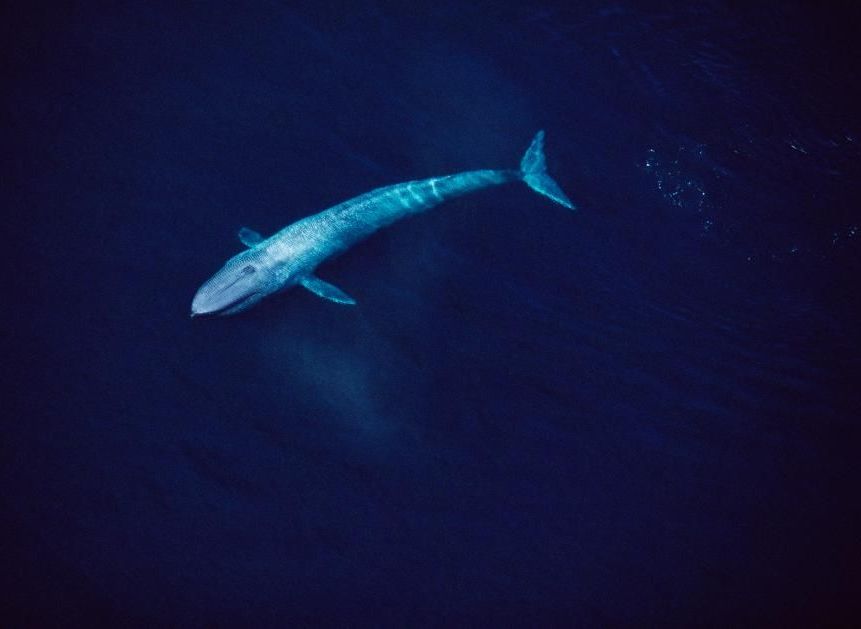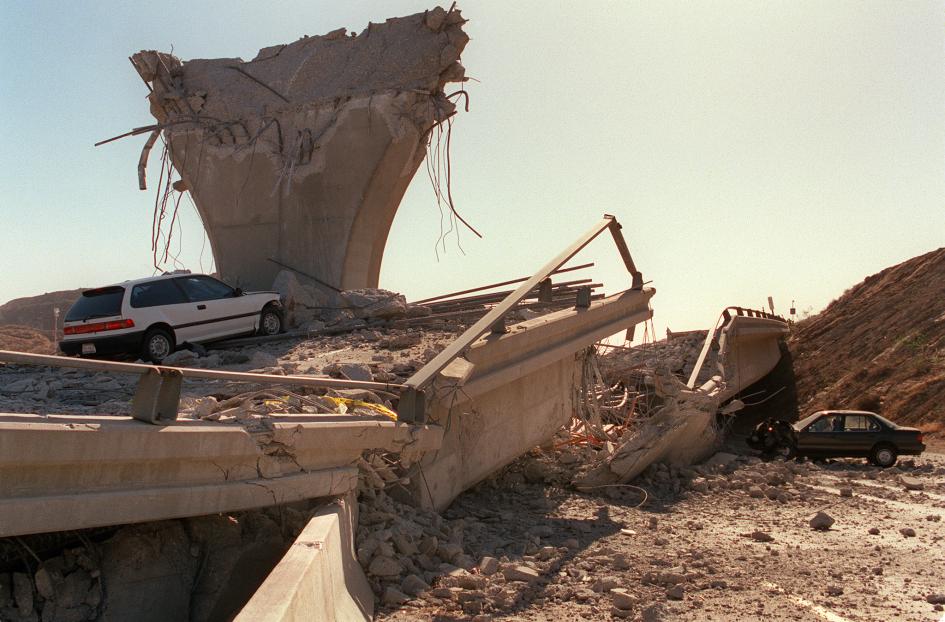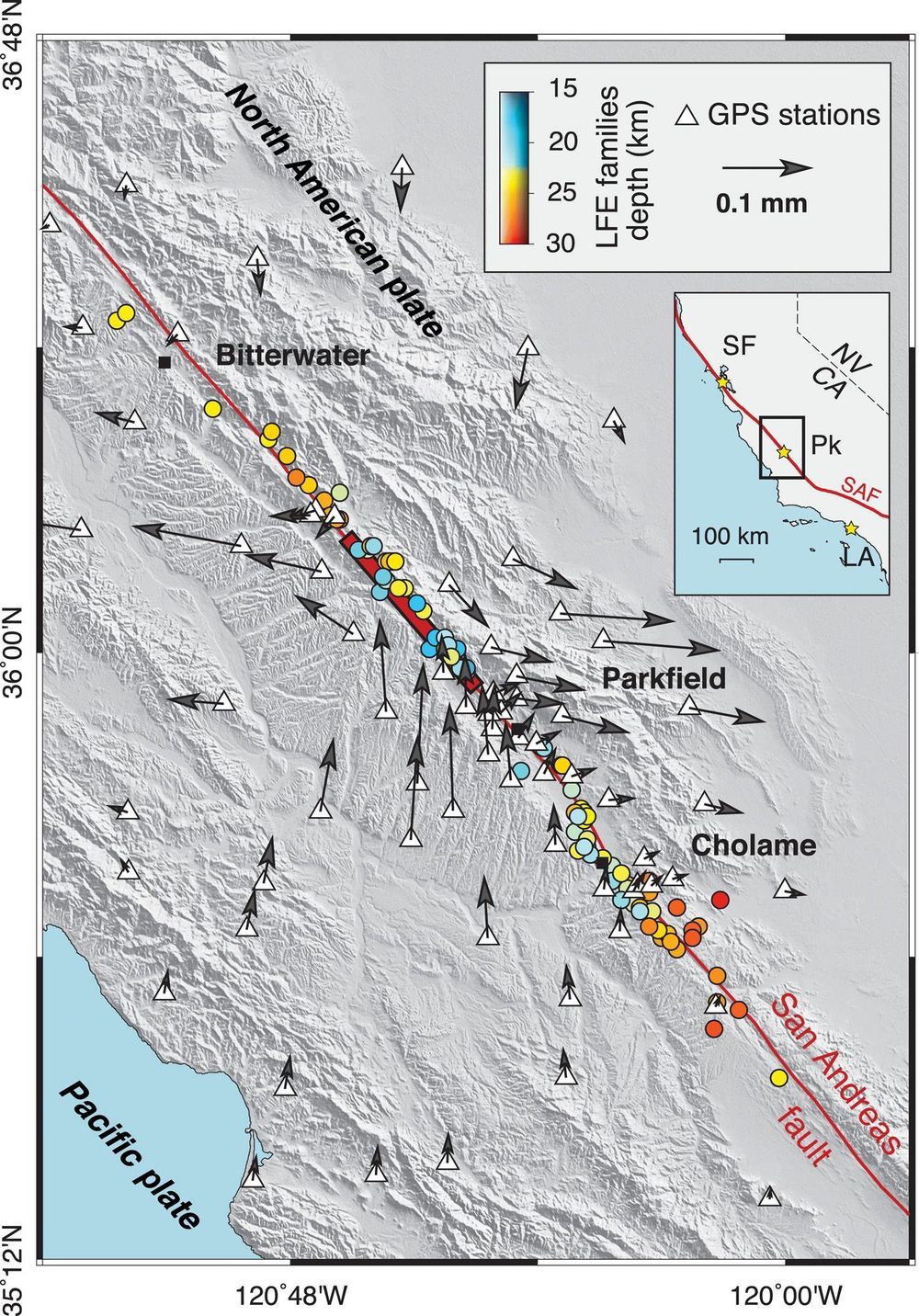The marine giant lived about 1.5 million years ago, suggesting that blue whales started bulking up much earlier than thought.






Episodic tremor and accompanying slow slip are observed at the down-dip edge of subduction seismogenic zones. While tremors are the seismic signature of this phenomenon, they correspond to a small fraction of the moment released; thus, the associated fault slip can be quantified only by geodetic observations. On continental strike-slip faults, tremors have been observed in the roots of the Parkfield segment of the San Andreas fault. However, associated transient aseismic slip has never been detected. By making use of the timing of transient tremor activity and the dense Parkfield-area global positioning system network, we can detect deep slow slip events (SSEs) at 16-km depth on the Parkfield segment with an average moment equivalent to Mw 4.90 ± 0.08. Characterization of transient SSEs below the Parkfield locked asperity, at the transition with the creeping section of the San Andreas fault, provides new constraints on the seismic cycle in this region.
The discovery of deep-seated slow slip events (SSEs) was enabled by the establishment of continuous global positioning system (GPS) measurements at the Nankai and Cascadia subduction zones (1, 2). Soon after, tectonic tremors that are temporally and spatially correlated with SSEs were discovered in Japan , leading to the recognition of the coupled phenomenon called episodic tremor and slip (ETS) (4, 5). ETS mostly occurs below the transition from brittle to ductile fault zone properties , where increasing temperatures and pore pressures due to metamorphic dehydration reactions inhibit fast ruptures. Long-lived tremor signals, in contrast with classical earthquakes, are made of a large number of low-frequency earthquakes (LFEs) that are thought to be due to the activation of small seismic asperities by surrounding slow slip. Strain rate transients due to SSEs correlated with tremor bursts are observed for transient durations ranging from minutes to months.




Future residents of Paramount Miami World Center, a 600-unit condominium building now under construction, may be the first in the world with a private skyport for their use, television station WSVN reports.
Infrastructure matters. Flying cars will never, um, get off the ground if they don’t have places to land. Helicopter landing pads and heliports are apparent answers to the question of where to touch down. However, landing spots or sky ports built specifically for flying cars could offer convenience and amenities specifically applicable for or adapted to flying cars.
“Ever since ‘The Jetsons’ came out, America’s been talking about flying cars,” Daniel Kodsi, Paramount Miami World Center’s CEO and developer, said in a statement. “It’s something that inspires you, something that you think about when you’re building a project. You’re saying, ‘Well, what is the future? What’s going to happen in the future?’”
